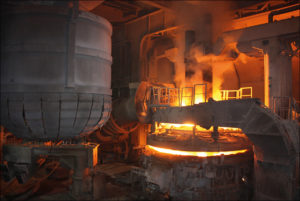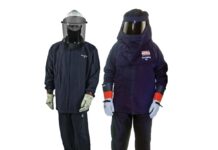The constant challenge facing the cold forging industry is to produce components cost efficiently. Steels for conventional use must generally be annealed and quenched and tempered to meet the requirements of “good workability” and “high strength”. Finding the right balance between high strength and simultaneous good workability and low manufacturing costs has now been mastered by the new bainitic steel Swissbain-7MnB8 from Swiss Steel AG.

Cold forging has great potential: unlike machining processes, parts are produced with very little loss of material. The volume of the feedstock is almost entirely formed into the finished product. Moreover, the processing speed is significantly higher. Compared to hot forming (forging), additional advantages include energy savings, excellent surface quality and dimensional accuracy. Downstream phases of processing can be reduced or in appropriate cases even eliminated. Due to the economic advantages, cold forging now constitutes a greater share of the total volume of production processes. In cold forging, the need for higher deformation degrees, higher strength, parts worked almost to near-net shape and high quality goes hand in hand with rising demands for economic and energy efficient production. The new Swissbain-7MnB8 product developed by Swiss Steel AG as part of the SCHMOLZ + BICKENBACH GROUP now makes cold forging even more efficient thanks to shorter cycle times compared to conventional quenched and tempered steels.
Swissbain-7MnB8 applications
Conventional quenched and tempered steels like e.g. 23MnB4, 41Cr4 or even 42CrMo4 have the disadvantage that they must be annealed prior to cold forging and must then be hardened by means of quenching and tempering. Long parts in particular can deform in the process. Any distortion must be corrected by means of additional straightening. Swissbain-7MnB8 steel, however, already has a higher degree of strength as-rolled that can be increased during cold forging to 800 to 1000 MPa on the finished part, depending on how the wire is withdrawn and the design of the shaping steps selected. Costly separate heat treatment and straightening processes are eliminated. Due to the higher starting strengths, it may be necessary to manufacture the parts on a stronger press with higher pressing force and a more stable shearing system. This additional effort can be compensated for by further savings in the manufacturing process and results in cost savings on specific parts. The new development is very easy to shape, and its additional properties include good weldability and machinability. Consequently, Swissbain-7MnB8 is ideally suited to cost efficient production of a number of articles for the automotive and construction industry for which no quenched structure is stipulated: short- and long-shaft ball studs, various screws, nuts, hollow parts, step-mounting pins, stud bolts, and plug bolts. Customers can order Swissbain-7MnB8 as standard 7 to 40 mm wire rod from Swiss Steel AG. Swiss Steel offers extensive consulting on treatment to users who are not familiar with the processing of high-strength products like Swissbain-7MnB8.
Product Development
The Swissbain-7MnB8 product was developed as part of the “Coheadbain” project funded by the European Research Fund for Coal and Steel. The aim was to produce a bainitic steel ideal for cold forging from which high-strength parts can be manufactured without additional annealing, quenching and tempering processes. One focus of the task was to reduce the cost of producing cold-forged parts. In three years’ time, a suitable material concept was developed in cooperation with research institutes and project partners from industry, and extensive laboratory and large-scale tests were conducted. The initial product was based on the bainitic steel concepts already used in the flat steel segment, which were transferred to the long product segment. An important element in regulating the strength of bainitic steels is carbon. Combined with iron, carbon forms the very hard and brittle phase cementite (iron carbide). This increases the risk of cracking during cold forging. A higher carbon content also reduces the ductility and workability of a material. The solution was obvious: Swiss Steel reduced the carbon content considerably. To achieve the required strengths despite a low carbon content, the steel specialists relied instead on micro-alloyed elements such as titanium, vanadium, and niobium. With this material concept, the use of expensive alloying additions such as chromium, molybdenum, and nickel could also be reduced.
Production and Rolling Technology
The basis for the product is separated scrap iron that Swiss Steel melts in an 80t electric arc furnace. The steel producer adds the micro-alloying elements to the ladle furnace. The molten steel is then cast as billets in the continuous casting plant. This is the semi-finished product from which wire is manufactured in the rolling mill. In addition to chemical analysis, control of the temperature and cooling process during rolling plays a decisive role when the cementite-free bainitic structure is to be regulated specifically for cold forging and with the desired mechanical properties. In cooperation with cold formers, Swiss Steel tested the final product successfully for its suitability for practical application and took it to market-readiness.







